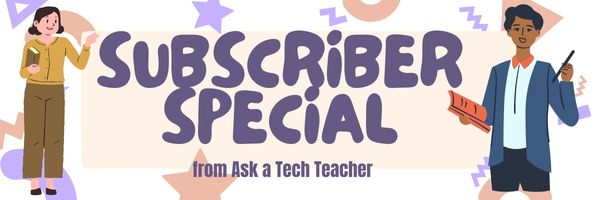Year: 2023
25 Online Resources About Brainstorming and Mindmapping
A mind map is a visual representation of information and ideas that helps organize and connect various concepts, making it easier for individuals and groups to understand, remember, and communicate complex topics. Some reasons why people use mind maps:
- Organizing Information: allow you to break down a topic into key components and show how they relate to each other.
- Visual Thinking: promote creativity and help individuals see patterns and relationships in a way text cannot.
- Memory Aid: for some, the visual nature makes it easier to recall information
- Problem Solving: encourage a non-linear approach to thinking and brainstorming.
- Project Planning: outline tasks, set priorities, and assign responsibilities
- Studying and Learning: make an excellent study aid for visual learners.
- Communication: present complex information in a more digestible and engaging manner
- Collaboration: facilitate collaborative thinking
Here are some online tools you might like:
Share this:
ASCII Art–Computer Art for Everyone
ASCII art is text-based visual art that uses ASCII characters to create images. It is a fun and effective way to teach keyboarding because it requires students use a variety of different keys, including the symbols.
Here’s a pumpkin I did for Halloween in about fifteen minutes:
Share this:
What You Might Have Missed in October–What’s up in November
Here are the most-read posts the past month:
Share this:
Subscriber Special: Holiday Project Book
Every month, subscribers to our newsletter get a free/discounted resource to help their tech teaching.
K-8 Holiday Projects
Regular price: $7.99
On Sale until November 8, 2023: $6.50
Share this:
Halloween Projects, Websites, Apps, Books, and a Costume
Three holidays are fast-approaching–Halloween, Thanksgiving, and Christmas. If you’re a teacher, that means lots of tie-ins to make school festive and relevant to students.
Here are ideas for Halloween projects, lesson plans, websites, and apps (check here for updated links):
Websites and Apps
- 30-day Halloween fitness challenge
- Build a Jack-o-lantern (in Google Slides)
- Carve-a-Pumpkin from Parents magazine – Resolute Digital, LLC (app)
- Enchanted Learning
- Halloween games, puzzles–clean, easy to understand website and few ads!
- Halloween Kahoot Games (video for teachers)
- Halloween Science
- Halloween Voice Transformer (app)
- Make A Zombie – Skunk Brothers GmbH (app)
- Meddybemps Spooky
- Pumpkin Patch Games
- The Kidz Page
- WordSearch Halloween – AFKSoft (app)
Projects
- ASCII Art–Computer Art for Everyone (a pumpkin–see inset)
- Lesson Plan: Halloween letter for grades 2-5
- Make a Holiday Card
- A Holiday Card
- A Holiday flier
Share this:
Inspiring Journeys of Certified English Language Educators
Inspiring Journeys of Certified English Language Educators
The recent changes in the working environment and the ongoing global economic crisis have brought about significant shifts in people’s lifestyles. These changes have influenced personal habits, from shopping preferences to social norms, and have also impacted how individuals view their professional lives, with many now valuing flexibility over stability.
As individuals have come to realize that external events can disrupt their life plans unexpectedly, they are increasingly willing to leave behind what was once considered safe and secure to chase their long-held dreams, however unconventional they may appear. Often, these dreams involve the mystery and excitement that international travel evokes.
The Attraction of Overseas Adventures
What makes the idea of travelling abroad so enticing? Naturally, everyone has a unique response to this question. travelling provides the opportunity to explore other cultures, witness the beauty of different countries, and, simultaneously, learn more about oneself.
Undoubtedly, living and travelling in a foreign land pushes you out of your comfort zone. Can you adapt to a place where you don’t speak the local language? How do you respond to unforeseen challenges? Are you able to start anew and form connections in a foreign setting? Travelling fosters new skills and puts your resilience and resourcefulness to the test.
Relocating to another country requires careful planning and financial awareness. Embarking on a journey abroad to teach English as a foreign language (TEFL) is an option that promises an exciting lifestyle where every day offers something new. It equips you with the means to sustain your daily life as well as your adventures abroad.
The Fulfillment of Teaching Overseas
Teaching is a profoundly rewarding profession – what you teach can directly impact the lives of others. For many people worldwide, learning English represents a step closer to financial stability, job prospects, and an improved quality of life. As a teacher, you’ll encounter countless fascinating individuals who are eager to teach you about their culture and country in return.
To become an English teacher abroad, it’s important to understand that the prerequisites for this career differ from one country to another. Some nations mandate a university degree and/or citizenship from specific English-speaking countries. Others may have age restrictions, while some are more flexible.
One thing remains certain: completing a 120-hour TEFL course not only opens doors to your dream job but also equips you with the confidence and knowledge needed to commence your teaching journey successfully. Numerous training options are available, but an accredited TEFL certification covers various areas, including language awareness (grammar, vocabulary, pronunciation), teaching skills (reading, listening, speaking, writing), methodology (PPP, TTT, Dogme, TBL), and learner assessment.
Regarding teaching opportunities, there is a wide array to choose from, depending on your qualifications, previous teaching experience, and personal preferences, from public schools to universities.
However, most newly certified TEFL teachers start their journey working for language schools or academies. These are private institutions offering language courses for various age groups and proficiency levels, with hiring typically ongoing throughout the year.
The experience of teaching in a private language school varies considerably depending on the country you are in and on the company itself. Like in any field, there are great employers while others are less than ideal. However, many teachers can confirm that the environment in an academy is usually conducive to learning and professional development, supporting teaching staff with a strong professional learning network.
A journey to the centre of ELT
What’s it really like to teach English abroad? Find out from the horse’s mouth and take a look at Monica’s teaching journey below.
Monica is originally from Italy but has lived in the UK for two decades. She started as a TEFL teacher in 2010 but then progressed to teacher training. More recently, Monica has decided to focus on materials and item writing, showing that there’s huge variety and plenty of opportunity in the ELT world. Here’s Monica’s story:
“My journey in the field of English Language Teaching began in December 2009 when I completed my Cert.Tesol course in London. Shortly after, I ventured to Prague, Czech Republic, for my first teaching position. From there, I continued to teach in Bergamo, Italy, and later in London and Cambridge, UK, where I pursued and successfully completed my DELTA course.
“Over nearly a decade, I taught a diverse range of students, spanning various backgrounds, age groups (from young learners to adults), and proficiency levels (from beginners to advanced). I had the opportunity to teach in various settings, including one-on-one, monolingual, and multilingual classes. I also specialized in preparing students for IELTS and Cambridge exams, as well as teaching EAP (English for Academic Purposes) and BE (Business English) classes.
“While in London, I had the privilege of working with an outstanding tutor who guided me in becoming a Trinity Tesol teacher trainer. It was during this time that I developed a deep passion for creating teaching materials and content. As a Senior Teacher in both London and Cambridge, I had the honor of designing and delivering teacher training courses, CPDs, and webinars. This experience led me to dive into writing, and my notes and ideas evolved into published articles.
“I realised that I enjoyed writing – especially about teaching and learning the English language! – and a couple of fortuitous events opened the doors for me to become an ELT writer. Two friends, who both work in ELT but in completely different settings and don’t know each other, asked me to work on two separate assignments.
“Being someone who loves a challenge – or two, in this case! – I had to give both projects a go. As a teacher at the time, I was quite confident in using, adapting, and creating (some) teaching materials, using coursebooks or other published materials as a starting point. However, this was materials writing from scratch and it was a completely different story!
“It turned out that I enjoyed everything about it: from the variety of the work, as you get a different project each time, to the comfortable environment of working from home. I particularly love the fact that professional development is key in this area of ELT. From ways to better represent a broader range of individuals to systems that allow you to create interactive content, there’s always something new to learn for every project I take on.
“Nowadays, I don’t teach anywhere near as much as I used to. However, I feel that keeping in touch with the realities of a classroom, whether it be virtual or not, is the best way to create relevant and fresh content. So today, even though I focus on writing ELT materials and content, for a wide range of international and UK-based clients, I still do some online lessons, mainly ESP (English for Specific Purposes).”
Do you feel inspired?
Do you fancy seeing for yourself what a life as a TEFL teacher abroad could be like for you? Start your own TEFL journey by looking at what is TEFL article from The TEFL Org.
Here’s the sign-up link if the image above doesn’t work:
Jacqui Murray has been teaching K-18 technology for 30 years. She is the editor/author of over a hundred tech ed resources including a K-12 technology curriculum, K-8 keyboard curriculum, K-8 Digital Citizenship curriculum. She is an adjunct professor in tech ed, Master Teacher, webmaster for four blogs, an Amazon Vine Voice, CSTA presentation reviewer, freelance journalist on tech ed topics, contributor to NEA Today, and author of the tech thrillers, To Hunt a Sub and Twenty-four Days. You can find her resources at Structured Learning.
Share this:
17 K-8 Digital Citizenship Topics
Education is no longer contained within classroom walls or the physical site of a school building. Learning isn’t confined to the eight hours between the school bell’s chimes or the struggling budget of an underfunded program.
Today, education can be found anywhere, by teaming up with students in Kenya or Skyping with an author in Sweden or chatting with an astrophysicist on the International Space Station. Students can use Google Earth to take a virtual tour of a zoo or a blog to collaborate on class research. Learning has no temporal or geographic borders, and is available wherever students and teachers find an internet connection.
This vast landscape of resources is often free, but this cerebral trek through the online world requires students know how to do it safely, securely, and responsibly. This used to mean limiting access to the internet, blocking websites, and layering rules upon rules hoping (vainly) students would be discouraged from using an infinite and fascinating resource.
It didn’t work.
Best practices now suggest that instead of cocooning students, we teach them to be good digital citizens, confident and competent in 17 areas:
Share this:
Teacher-Authors: What’s Happening on my Writer’s Blog
A lot of teacher-authors read my WordDreams blog. In this monthly column, I share the most popular post from the past month on my teacher education blog, Ask a Tech Teacher. This particular post is on the hot topic of generative AI. While I do share a quick paragraph of my opinion (beware bias), the strength of this topic is in the post’s comments and the other 120 groupmember posts on this same topic (click here for the entire list of participants). If you’re looking for a great overview of generative AI, here’s a great place to start:
This post is for Alex Cavanaugh’s Insecure Writers Support Group (click the link for details on what that means and how to join. You will also find a list of bloggers signed up to the challenge that are worth checking out. The first Wednesday of every month, we all post our thoughts, fears or words of encouragement for fellow writers.
This month’s question — The topic of AI writing has been heavily debated across the world. According to various sources, generative AI will assist writers, not replace them. What are your thoughts?
My thoughts on this topic remain heavily conflicted. Every time I come up with an opinion, I have a counter-opinion. The only one that remains always there, though, is
Share this:
How to Kidproof the Internet
How to keep children safe online is the most popular question parents ask at my school. They want to know about firewalls, filters, kidsafe desktops, nannycams, cyberbullying, internet privacy, and everything in between. Should they keep their children away from computers or just off the internet? Do they have to sit with them while they work? Is there an age when it’s OK to let them on their own?
No. No. and No. Parents must teach children to take care of themselves while visiting the vast, anonymous, addictive neighborhood called ‘the internet’. Just as they stay at your side in large busy stores, don’t talk to strangers, and don’t open the door to people they don’t know, they will learn to be safe in the digital world. Because it’s part of our genome–to do what keeps us safe.
While they’re getting to that epiphany, here are ideas you can employ to support them on the way:
- Teach your children to use the internet. They are digital citizens which includes rights and responsibilities they probably aren’t aware of. Just as in their neighborhood, they must learn them. Don’t hope school teaches them. They may, or might teach them wrong. Teach your kids to avoid ads, that anonymous isn’t innocent, and online relationships aren’t always friendly. Tell them again and again. Sooner than you think, they will own it. Just as they don’t cross the street without looking both ways, they won’t cross the ‘digital street’ unless it’s safe.
- Discuss what they can and cannot do online. Discuss why so they understand. You want them able to take care of themselves which means not putting themselves in harm’s way.
- Use a parental control filter. Block everything you worry about–chicks, Minecraft, girls, Facebook, xxx, murder. It’s easy to unblock if your child needs a site that won’t come up. More importantly, it leads to a conversation with your child about what they’re researching and why a particular site is relevant. You want your child comfortable with you involved in their lives–not as an arbiter of right and wrong, but an interested loving party.
- Do not assume parental controls are perfect. In fact, assume they aren’t. Stay vigilant. Be aware when your child is too quiet or too noisy at the computer. Ask questions. Pop in unexpectedly.
- Enforce rules. Don’t decide you’re too tired one night to go check a website your child tells you they need to visit. Always always always follow your own rules.
- Check ‘history’ on your child’s computer. Do it with them so they understand this is part of the plan to keep them safe.
- Know what their school does to keep your child safe online. Follow the same rules, or follow your own. Do explain the differences to your child. Children are flexible. They will be fine with varied rules.
Share this:
Lots of Online Music Resources
Here are popular online royalty-free music resources for presentations, classwork, and projects (click here for updates):
- Audio Archive–millions of varied musical selections
- Bensound–royalty free
- dig.ccMixter--free for commercial too
- Fesliyan
- Free Music Archive
- Free Stock Music
- MusOpen–royalty-free music
- Pixabay Music
- Videvo–royalty-free music
Looking for general music sites? Check these out:






















































